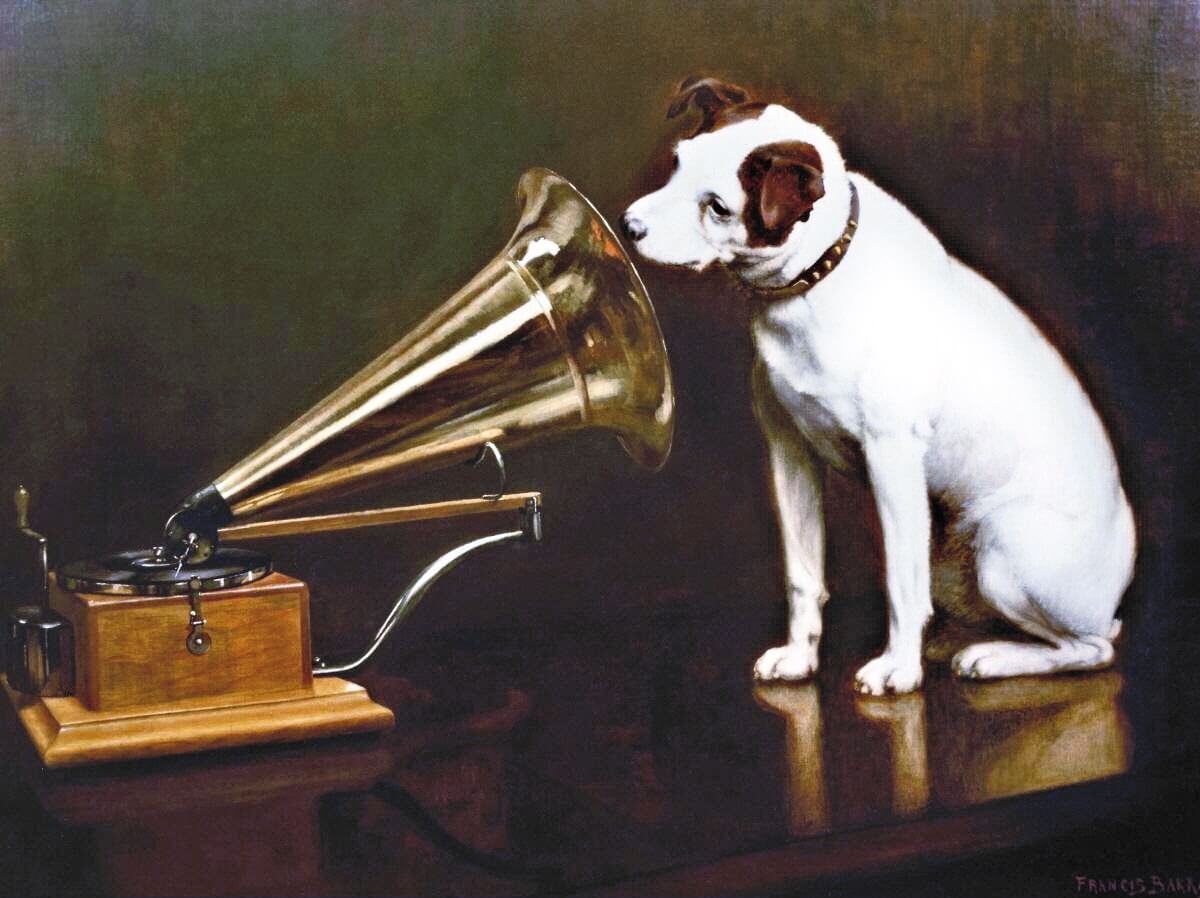
At one time, an album of music was seen as a whole, a work with a theme, and a certain relationship between the tracks.
According to 2018 data from MIDiA Research, a company that specializes in data analysis in the media and music industries, and is considered the industry standard, only about 16 percent of adults listen to a whole album of music on a monthly basis. In contrast, 35 percent say they listen by streaming from their phones.
The industry calls it the “skip-rate” — how often listeners skip through tracks on an album. The music industry being just that — an industry — execs looked for ways to profit from the exercise.
The Song Economy
The industry embraced digital streaming over CD technology, and while the CD’s demise has been much lamented, it was more planned than accidental.
Because of the proliferation effect of digital media, tracks from any era can now be monster hits. Journey’s Don’t Stop Believin’, which was a minor hit when it was released back in 1981, has seen pop culture boosts, such as being featured on the Sopranos finale, and on the UK’s talent show, The X Factor. Today, it’s rapidly approaching a staggering 1 billion listens on streaming services worldwide.
Music companies now view their back catalogues as “song assets” and they’re in the game of trying to license them for as many applications as possible. Along with consumer habits, that’s an example of the kind of logic — and the record company executive’s dreams — behind what is called the song economy.
Songs have become a mini-industry of their own. It’s the juggernaut behind the music streaming biz, and as a concept, it applies to new releases as much as older ones. It’s also been called the “post-album” phase of the music industry. Even for the most successful artists, their top few tracks often make up a hugely disproportionate percentage of their revenues.
In terms of contemporary music, in theory it should put the power back into songwriter’s — and music composer’s — hands. In practice, the number of songwriters per song on the Billboard charts has increased through the last couple of decades. About a quarter of the songs on those charts now claim no less than four songwriters and two producers.
Music listeners, however, also don’t want to have to punch in each song individually; hence, the creation of playlists.

The Playlist Phenomenon
Nowadays, about a third of all streams on Spotify come from playlists, a fact that can literally change an artist’s career overnight. Some playlists have millions of subscribers, and statistics show that people who like a song on a playlist are likely to search it out and listen again on its own. The strategy works.
So, how do you go about getting on a playlist? That becomes the question.
A couple of years ago, playlists were curated by employees of streaming services, as a kind of recommendation by the experts. However, the selection process was, and remains, mysterious. At first, playlists were supposedly curated on a merit-only basis, and submitting a track via the platform was the only way to get on one.
While the process was supposed to be all about the music, a few years ago, some insiders started noticing things that didn’t fit the accepted story. Some industry insiders accused the streaming services of stuffing their playlists with 60 second tracks — since 30 seconds’ play is all that is required for a payout.
In 2019, Rolling Stone reported on what should have been a much bigger scandal in the streaming business. Music Business Worldwide had identified a list of 50 of what they called fake — as in, fictional — artists who were making huge money on Spotify. They included names like Ana Olgica, with 154 million plays and 1.52 million monthly listeners, and Piotr Miteska, with 115 million plays, and 1.47 million monthly listeners. They accounted for 1.22 billion plays on Spotify. To put the figures into perspective, the entire Beyoncé catalogue doesn’t generate that kind of numbers.
Most of the artists on the list had only uploaded a few songs onto the streaming platform. Those tracks became part of a Spotify mood or activity playlist — Deep Focus, Peaceful Piano. With only a few tracks, no social media or other online presence, how did these artists manage such impressive numbers?
Intrepid reporters dug into the data, and found that found that the tracks were created under pseudonyms by various composers working out of an outfit called Epidemic Sound, billed as a Swedish production music house.
Royalty payments on Spotify and other mainstream streaming services takes the total industry payout, and divides it among the artists on the platform, pro rata according to the proportion of all streams they account for. While the whole area is shrouded in secrecy, and there is no proof, the suspicion among record companies is that Spotify has negotiated a lower pay rate for royalties on production house tracks, meaning they get to keep a higher percentage of those massive stream numbers.
What’s happened since the story first broke in 2017? Apparently nothing. As Rolling Stone reported in 2019, those same artists have racked up another 3 billion streams or so.
According to Jeremy Erlich, VP, Head of Music Strategy at Spotify, the only way to get on a playlist is by submitting your track through their platform.
He told Forbes Magazine that currently, playlists are curated by both human beings and algorithms. “We started with 100% human curation, now there’s more algorithm and machine learning. We do “algatorial” — which is human curated and then machine personalized. Some of those personalized playlists are Discover Weekly and Beast Mode. Yours might not look like mine, but the songs are picked by our editors.”

Classical Music And Streaming
Western classical music, with its centuries of repertoire, and what could be dozens of interpretations of the same compositions, defies the usual algorithmic logic of mainstream streaming services, which tend to look at artist and composition alone. How could people explore and discover new works within a category that encompasses more than 1,000 years’ worth of repertoire?
While the data puts the percentage of classical music at a small fraction of the total, about 25 percent of subscribers to streaming services explore classical music at least once. The interest is there — but how can they find anything other than the most obvious selections with crude search parameters?
Estimates on how much of the streaming market is represented by classical music vary between 1 and 5 percent — too small for the mainstream industry to bother with in terms of catering to the market. That’s where classical-only streaming service like Idagio and Primephonic have stepped into the breach.
In addition to being able to properly search classical music recordings, both services offer exclusive content, such as Idagio’s live concert recordings, and playlists curated by experts in the music. Classical-only streaming services also offer better pay rates to rights holders than those of Spotify and the other big streaming services.
While it’s too soon to say whether the classical music only streaming model will pan out financially, the signs are encouraging. Idagio’s own stats indicate that it’s becoming trendy among hipster teens in Berlin, a niche that speaks well for the future of the Western classical music genre.

Classical Music And Playlists
If playlists are king, where does that leave classical music? Major streaming services have responded with playlists like the Spotify’s Peaceful Piano and Apple’s Relaxing Classical.
To a certain extent, classical music seems to be somewhat immune from overall industry trends. Data from 2018 suggests that classical music is bucking at least some of them. Sales and streams combined increased 10.2 percent over one year, well above the industry average of 5.7 percent. Streaming classical music in particular showed a yearly rise of 42 percent, as compared with 33 percent overall.
That market tends to be dominated by international stars like Ludovico Einaudi, who accounts for one in 12 classical music streams in the UK. Films scores, like Canadian composer Howard Shore’s Lord of the Rings, also take up a large part of those sales.
The percentage of physical CD sales to digital/streaming is also widely divergent between the classical and mainstream markets. Physical sales still account for about 60 percent of overall sales in the classical market, as compared to the mainstream pop world, where physical CD sales continue to plummet to the tune of double digits annually.
However encouraging, those figures are generally recognized to represent existing classical music lovers. Streaming is the way to get that new blood the classical music world is always looking for.
There have been some unexpected success stories that illustrate the potential when it comes to classical music, streaming, and playlists in the digital world. A recording of Gluck’s Mélodie from Orfeo et Eurydice on the indie Signum label saw more than 1 million streams to a half million listeners in 65 countries. Physical distribution on that scale would have proven impossible.
There is also some reason for hope from data that suggests a correlation between the tracks that are heavily streamed and album sales. It means that some people may be using streaming, including playlist recommendations, to experiment with new music before they go ahead and buy.
Gluck’s Mélodie from Orfeo et Eurydice (live)
Moving Ahead In The Digital Era
Classical music may seem to be the antithesis of the digital era. Yet, Western classical music and the recording industry have had a long partnership. It was opera singers like Enrico Caruso and others who became the first recording music stars, and fun fact: it was a Sony executive trying to listen to chamber music and drown out his kids’ radio hits that spurred the invention of the Walkman and portable listening technology. The CD sampling rate was set to a speed that would fit Beethoven’s Ninth Symphony, as played by the Berlin Philharmonic under the baton of Herbert von Karajan, on a 4.72-inch disk.
Back in the old days of vinyl, of course, no one ever knew how many people actually listened to every track. Anecdotally, most listened to the whole album only once. The difference, of course, lies in how artists are compensated.
One of the problems with the song economy and classical music is the way that royalties are paid. Payments are made per track, per stream, provided the listener streams for at least 30 seconds. That puts a 3-minute pop song on the same footing as the 20-minute movement of a symphony when it comes to payment to the rights holder.
Despite all the changes in the digital era, the album is still the music industry’s economic unit of measure. Perhaps it’s time to update it, or at least provide some other context than album sales to gauge the success of a project, or in contractual negotiations.
In 2019, recorded music revenues hit $21.5 billion. As always, the problem for composers and artists remains: how to get a bigger — and fairer — slice of that pie.
#LUDWIGVAN
Want more updates on classical music and opera news and reviews? Follow us on Facebook, Instagram or Twitter for all the latest.
- PREVIEW | SUMMER OPERA LYRIC THEATRE Presents Handel’s Xerxes, Mozart’s Idomeneo & Puccini’a La Boheme July 26 To August 4 - July 26, 2024
- PREVIEW | YENSA Festival V.2 Offers Black Flames Performances & Other Ways To Celebrate Black Women In Dance - July 25, 2024
- PREVIEW | Canadian Talent Conspicuous In The Met: Live In HD 2024-25 Season - July 25, 2024



